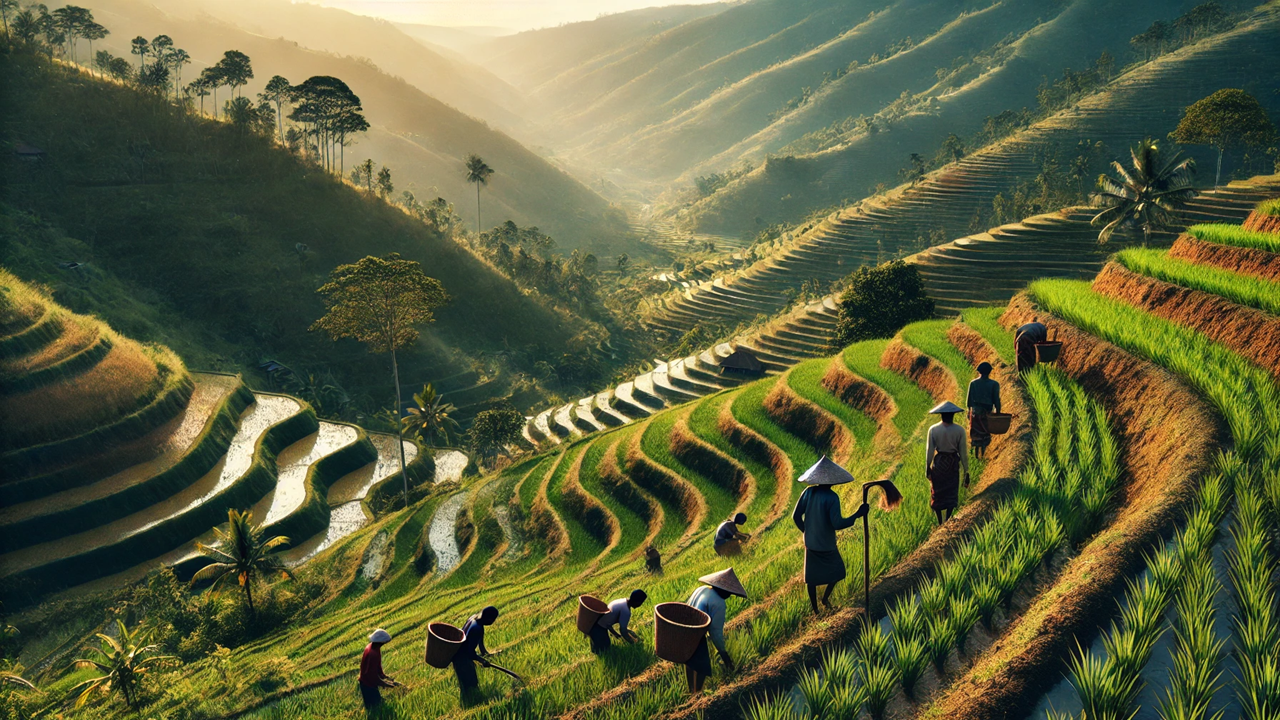Breaking the Cycle of Poverty: Boosting Agricultural Productivity in Timor-Leste
This article, based on the World Bank report "Making Agriculture Work for the Poor in Timor-Leste", highlights how improvements in agricultural productivity can significantly reduce poverty in Timor-Leste. It emphasizes the importance of mechanization, better access to chemical inputs, expanded credit opportunities, and promoting gender equality in the sector. Additionally, the article explores how improving market access and infrastructure can help shift farmers from subsistence to commercial farming, boosting their income and the country's economy.

Agriculture has long been a backbone for Timor-Leste’s economy, especially for the rural poor, but despite its importance, the sector remains underdeveloped, limiting its ability to alleviate poverty. According to the World Bank report "Making Agriculture Work for the Poor in Timor-Leste", increasing agricultural productivity could unlock the key to sustainable poverty reduction in the country. However, this requires overcoming several significant barriers to growth.
Agriculture: The Key to Lifting Timor-Leste’s Poor
Approximately 80% of poor households in Timor-Leste rely on agriculture for their livelihood. Despite this, the sector's productivity remains alarmingly low. The report notes that agricultural productivity in Timor-Leste is far behind that of other small island developing states, with crop yields per hectare falling well below global averages. This inefficiency is not just about missed opportunities for higher earnings—it's also a major obstacle to improving food security and reducing poverty.
The impact of low agricultural productivity is widespread, affecting the livelihoods of smallholder farmers, who often find themselves trapped in subsistence farming with little chance of improvement. While agriculture accounts for over 90% of the country's exports, it contributes just 11.4% to the GDP. This imbalance highlights the urgent need for reforms aimed at enhancing productivity to improve the income of the poor and contribute more significantly to national economic growth.
Tackling the Productivity Puzzle
The World Bank’s report outlines various strategies for improving agricultural productivity in Timor-Leste, focusing on modernizing farming methods and increasing access to necessary resources. One of the most critical steps is mechanization, which involves the use of tractors and other agricultural machinery. Currently, only about 10% of farms in the country use mechanized tools, leaving the majority of farmers dependent on manual labor. By facilitating farm mechanization, the government can help farmers cultivate more land and increase their output, significantly boosting overall productivity.
In addition to mechanization, access to chemical inputs like fertilizers, pesticides, and herbicides remains limited. Less than 15% of farming households in Timor-Leste use these inputs, largely due to their high cost and low availability. The report suggests that government subsidies and credit programs could improve access to these inputs, but stresses the importance of promoting environmentally sustainable practices to avoid soil degradation and water contamination.
Credit access is another critical factor in increasing productivity. With fewer than 1% of farming households in Timor-Leste able to access credit for purchasing agricultural inputs, smallholder farmers often find themselves unable to invest in better equipment or seeds. Expanding access to credit through micro-loans and other flexible financing options could provide farmers with the means to modernize their operations.
The Role of Farmer Groups and Gender Equality
The report highlights the importance of farmer groups in boosting productivity. Farmers who join cooperative groups are more likely to share resources, such as equipment, and benefit from collective bargaining for better prices. Yet, fewer than 10% of farmers belong to such groups. Encouraging more widespread participation could significantly enhance the sector’s productivity and commercial viability.
Gender inequality in Timor-Leste’s agricultural sector is another barrier that must be addressed. Female-headed households (FHHs), which make up 10% of farming households, are typically less productive than their male counterparts. The report estimates a 12% productivity gap between male- and female-headed households, mainly due to women’s reduced access to agricultural resources like credit, mechanization, and extension services. Closing this gender gap by improving women’s access to these resources could boost productivity across the sector.
Commercialization and Infrastructure
One of the most striking challenges outlined in the report is the low level of commercialization in Timor-Leste’s agricultural sector. Most farming households engage in subsistence farming, with over half of them producing only for their consumption. This limits farmers' ability to generate income and reinvest in their farms. Only 47% of farming households sell any portion of their crops, and among those, only a small percentage of the produce reaches local markets. The long distances to the market and poor infrastructure are major impediments, with farmers often traveling over 6 kilometers to reach the nearest market.
To address this, the report recommends improving infrastructure, particularly rural roads, to reduce transportation costs and facilitate easier market access. Additionally, expanding market opportunities for high-value crops like coffee, spices, and hardwoods could encourage farmers to transition from subsistence to commercial farming, thereby increasing their income and economic contribution to the country.
A Path Forward
The "Making Agriculture Work for the Poor in Timor-Leste" report underscores that boosting agricultural productivity is essential for poverty reduction in Timor-Leste. However, this requires targeted policy interventions. From improving access to credit and mechanization to promoting gender equality and commercial farming, agriculture's potential to lift the poor out of poverty is vast but demands concerted efforts.
Timor-Leste’s agricultural future is bright, but only if its farmers have the tools, resources, and support they need to succeed. By addressing the key constraints to productivity, the country can make significant strides in reducing poverty, improving food security, and fostering economic growth.
- FIRST PUBLISHED IN:
- Devdiscourse










